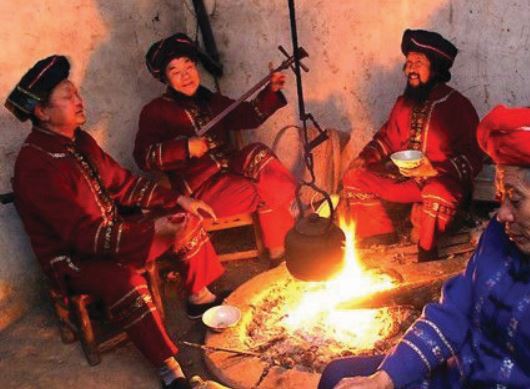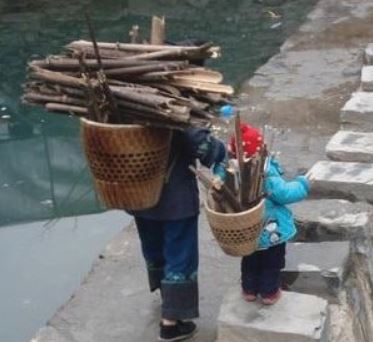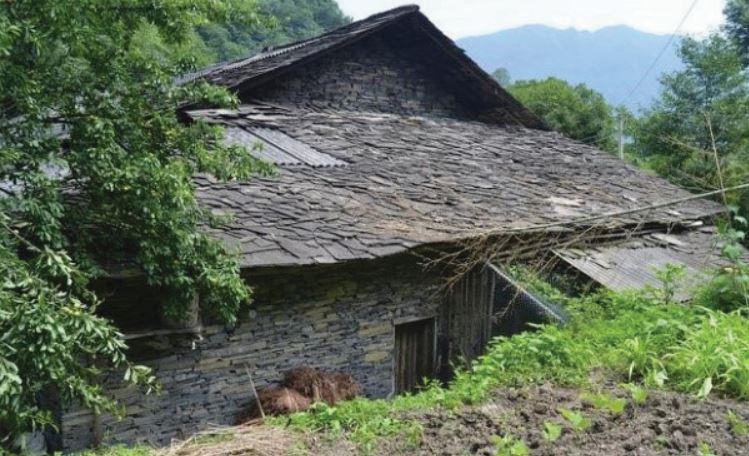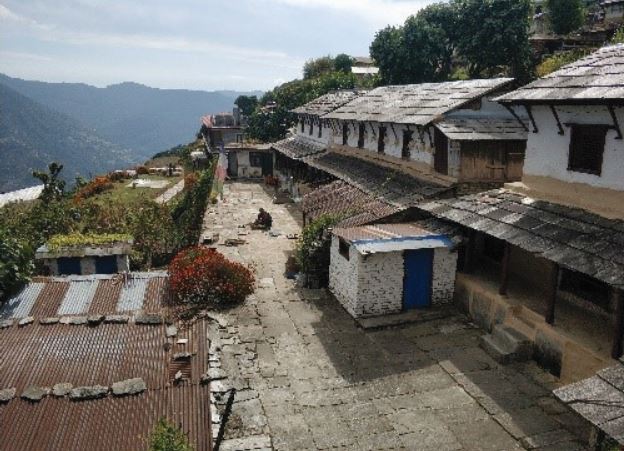What is the time?
I like to plan ahead. I try to schedule work and play for the coming week, or even further ahead. Frequently this doesn’t work out. Nepal has a very different sense of planning from me. In fact, it seems to run on a different clock than me. Forget that 15 minutes ahead of India, Nepalis seem to be at least 30 minutes behind Scottish time! Indeed, sometimes Nepal is days behind Scotland. So that’s why I find myself sitting here on a Wednesday afternoon completely caught up. I have been running around like a headless chicken for the past two weeks, as everything is ‘urgent’. And had expected to continue to be frantic for the rest of the month. But here I am, up-to-date. Or should I say, here I am waiting. And I am not very good at waiting.
For example, while I had nothing to do over the Dashain/Tihar period except hang around the gym, pool and at my ‘local’ 5 star hotel bar (friends know what I’m talking about) I could have been more productive if others had planned ahead for more than just their Dashain shopping before the festivities began. You would think I would be used to this by now, but nope. Somehow I always believe that the phrase “I will get it to you tomorrow”. And I forget to ask, “which tomorrow exactly?”
Then there are the events that never start on time. So by now I have come to realise that the advertised time, even if printed on an invitation, is not the real starting time. Even I have learned not to arrive at the given time. But still I seem to arrive first. Or because I am busy at another event I assume I will be too late for something that starts at 8pm. Its only later, I see the live feed on Facebook, where introductions are taking place at 10pm! And then I think I could have been there after all.
I have been brought up to think it rude and impolite to be late. I would never dream of turning up two hours late to anything without a very valid excuse. It annoys me still when others do this. And as for the ‘too much traffic’ excuse, well excuse me, when is there no traffic? How difficult is it to start off earlier when you know full well the traffic will be heavy? Do you think there are no rush hours in other countries? Yes there are, and the commuters build in extra travel time at peak times. That is called forward planning. I know these words are very unfamiliar so let’s all say them together—“forward planning”.
Recently however there has been glimmers of hope. Plane passengers get annoyed having to wait on the tarmac for a VIP to arrive. Drivers also now get impatient having to stop for a cavalcade driving through town. Bike riders have been seen to just push on through regardless.
And what about places like the yoga studio I (infrequently) attend? Classes start and end on time, even with the majority of the attendees being Nepali. Are they a different breed then? I have to admit I am now sitting here looking out of the window trying to think of other places and situations where things start on time. I am failing to come up with anything. Cinema? Well the pre-show adverts might start on time but there are still those dozen or so people who come in just as the main show is starting. Public transport? Don’t make me laugh! Private offices? Recently I was in my bank at 9.55 and the tellers were not at their positions, despite the fact the bank opens at 9.45. So probably not.
Anyway, I’m heading out in two hours, so I had better start to plan my preparations…
How an orphan charted his way to box-office fame
“I’ve done everything in the movie industry except for saying action and cut [directing]. I can’t do that as I don’t have an education. There was no one to take me to school when I was a child,” says 49-year-old Singe Lama, narrating his life story full of struggles in an easy and affable manner, as if no problem can wipe the incessant smile off his face. Lama, a successful art director turned film producer who’s given hits like “Jatra” (2016), “Hari” (2018) and the recent “Jatrai Jatra”, has a fiction-like story of his own. For his close ones, his truth is painful as well as inspiring.
Born into a small family in the Tamang settlement in Chilime, Rasuwa, Lama lost his mother when he was just three months and he has no recollection of her. He was then raised by his father who, as fate would have it, also departed when his was around 7. As an orphan, Lama had to start working from an early age for survival and quit school. “The only thing I got from school is my name,” he says, again with a bit of laughter mixed voice. “I had a different name back then which I can’t recall. My grade 2 teacher didn’t like it and changed my name to Singe. That was the year I had to quit school.”
An orphan in a rural village without roads, the only option for Lama was to work as a helper on the highway being built at a day’s walk from his village, and that was his home for a few years. He started with helping in the kitchen then gradually moved to carrying loads and as he grew up and discovered he could run fast, he took one of the most dangerous jobs around. Why? It paid him a little extra than his daily wage of Rs 25 and also earned him chicken for lunch. Lama became what he calls a “bomb blaster.” He was in charge of lighting the fuses of explosives that were fitted under huge rocks to shatter them. “It was dangerous, but the extra money and chicken were always welcome,” he says.
Then, at the age of 15 or 16, Lama decided to come to Kathmandu to try his luck here. He remembers it was 1986 and he paid Rs 18 to buy himself a bus ride here from Trishuli. With no education, no financial backing, no family and no trade skills whatsoever, the following years were filled with trials and tribulations as he switched from one job to another, trying to settle in this strange city. “There’s nothing I didn’t do back then. From peddling small things in the streets to laboring in construction sites, from putting up the Maoist posters in the beginning of the revolution to running a canteen, I’ve done it all. I’ve seen every inch of Kathmandu,” he says proudly, now seated as the center of attraction at a posh restaurant in the same city. “Life was fun back then. I lived for the day with no worries of the future. You know, I even managed to learn karate and became a coach in Jhapa for a couple of years.”
It was in Jhapa that Lama had his first tryst with the film industry. He worked part time as a projector operator and usher at a local theater. And when he came back to Kathmandu, an acquaintance introduced him to Nandu Adhikari, a popular art director at the time. “Nandu dai took me in as I was a skillful handyman by then and never said no to anything,” Lama says. “He taught me everything about set designing and art direction. Unfortunately, he got into an accident and died soon.”
But this time Lama stuck to his vocation and soon he was a sought after man, designing sets for dozens of films, videos, ad shoots and TV programs. He recalls doing his first film all by himself in 1999. And not only did he design beautiful sets, he also worked in the lighting department as well as dress-designing. There was just nothing he wouldn’t do.
In the course of working in the industry and getting to know many faces behind it, Lama grew close to Pradip Bhattarai, an assistant director for the MaHa studios. That’s when the idea of making a film got into him and Lama put together the theme of “Jatra”. With Bhattarai as the director, Lama raised enough money to finance the film with the help of three other partners.
“I didn’t have any cash savings but I had created a name for myself by then,” says Lama. “That worked and investors supported me in cash or even kind.” Jatra was a huge success in Nepal and overseas and made double the investment. So Lama’s career as a film producer took off in 2016 and with consecutive hits, he hasn’t had to look back.
“But the pressure now begins,” Lama points out. “Most of my life I have lived carefree without much commitment. I’d earn for the day, sleep at night, and then start earning for the next day again. I had no expectations from people. But now I have an identity and know people look up to me. This feeling is entirely new.”
Lama then reveals his plans for his upcoming feature film titled “Ke Ghar, Ke Dera?” with director Subrat Acharya. The final script is almost ready and most of the cast has been roped in, he informs. “It is an organic story based in Kathmandu. I hope people like it as much as they liked our previous movies.”
Two peoples, one way of life
In early 2014 when I was about to leave for Nepal to work as a resident reporter, the head of my Chinese newspaper asked me, “Is everything ready?” “No problem,” I replied. “I grew up at the foot of the mountain, too. The only difference is that the mountains in Nepal are bigger.”
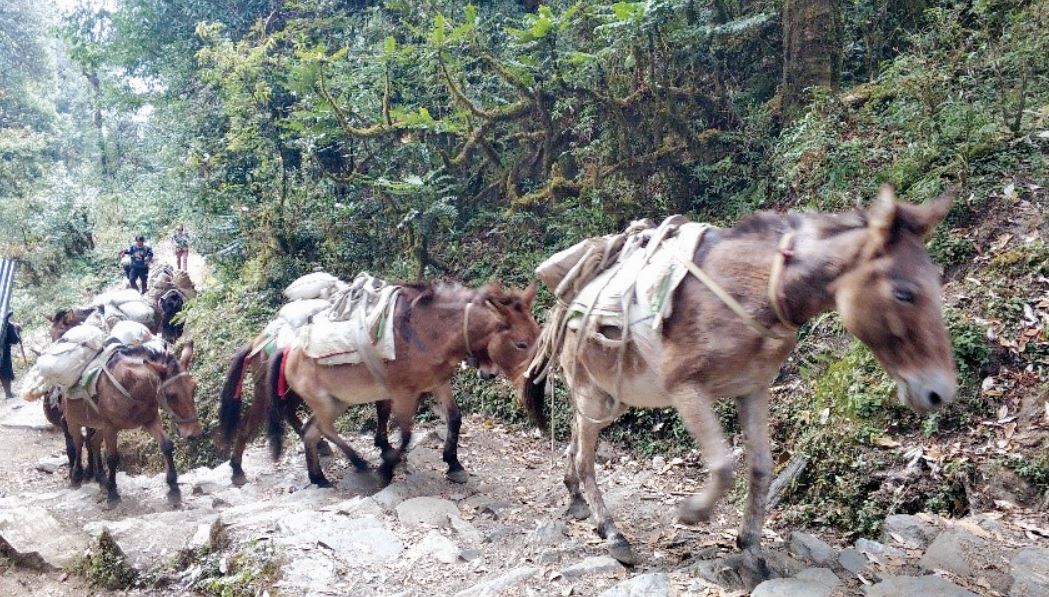
There is an old Chinese saying: ‘Different lands bring up different people’. A similar statement can be traced back to the ancient Greek concept of “geographical determinism”. I have long supported this view. For example, many people in Nepal like spicy food, as do people in southwest China. Sichuan cuisine is known for its spicy taste. The Chinese believe that as the Sichuan mountain area is humid, people there don’t sweat much. They thus eat spicy food to release the excess moisture in their body, which in turn keeps them healthy.
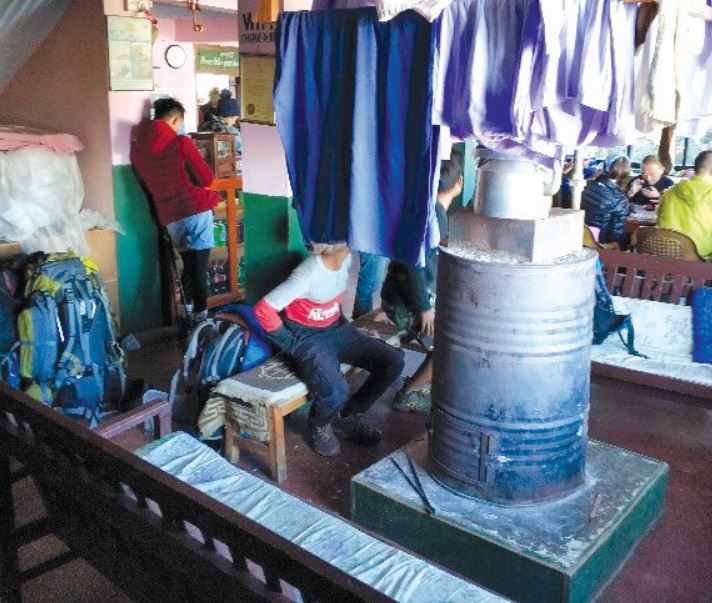
Tens of millions years ago, the ancient Indian continent began to move towards Eurasia, eventually triggering an epic Himalayan orogeny that created the towering Himalayas and the world’s third pole, the Qinghai-Tibetan plateau. This powerful force traveled east from the Qinghai-Tibet plateau and was responsible for the development of the Qinling Mountains in central China. When the Yangtze River from the Qinghai-Tibet plateau pushed aside the obstruction of the Qinling Mountains and continued eastward, the cooperation of the Yangtze River and the Qinling Mountains led to the emergence of the famous “three gorges of the Yangtze river”.
My hometown is just beside the three gorges. From this point of view, although more than 2,500 km apart, my hometown and Nepal are neighbors. If viewed from outer space, the whole area affected by the Himalayan orogeny appears as a whole; my hometown is at the eastern gate while Nepalis live at the southern gate.
The smart mountain folks made same bamboo baskets at both the places.
The weather in Nepal is good at this time, so I chose to go trekking in Pokhara. When I came to the Gurung village in the mountains, I suddenly had a feeling of returning home. Really, I thought I could actually see my home.
The above pictures of my hometown (on the left) are all from the internet. Many of them exist only in the vague memory of my childhood. When a person suddenly sees his childhood hometown scenery abroad, he is reduced to tears.
The following part may surprise you: my hometown also has the legend of “yeti”, only we don’t call it “yeti”, but “Ye Ren” (savage). Savage legends have thousands of years of history, and many ancient books also recorded the existence of this mysterious creature. In the 1970s, after the cadres of the local forest farm witnessed the Savage and wrote a detailed eyewitness report to the superior government, the Chinese Academy of Sciences established the “investigation team of mysterious creature” in 1976. With the help of a large number of PLA, it carried out a detailed field research on the relevant forest.
Houses of stone. Yes, 2,500 kilometers apart, the smart mountain folks in Sichuan and Nepal solved the problem of scarce building materials the same way.
Of course, apart from the footprints, feces, hair and reed-woven nests that might have been left by the Savages, there was no strong evidence of their existence, such as a corpse. To this day, this unsolved mystery can still arouse people’s imagination.
Life in the Nepali mountains was enjoyable and I was lucky enough to choose a SIM card that had no signal. I could completely relax from the usual tense life. When there is no Internet, no TV in the cold mountain night, you sit around the stove holding a cup of warm Nepali milk tea: Happiness is that easy.
There is an ancient Chinese poem, which goes like this: “When the bright moon rises in the sky, look up at her. No matter where we are in the world, we will see the same moon and share the same time”. Another ancient Chinese poem says, “If you forget you are a guest in your dream, take this place as your hometown.”
These days I have started considering the whole of Nepal as my hometown.
The author is chief correspondent of the Kathmandu office of Shanghai Wen Hui Daily. He has a Master’s in International Relations
Quick questions with SAGARIKA SHRESTHA (VJ/ Event host)
Q. What do you like to do in your spare time?
A. Netflix and sleep.
Q. If you had only one day left to live, what would you do on that day?
A. Spend it with my loved ones and eat a lot of food.
Q. Which Nepali celebrity do you most admire and why?
A. Malvika Subba and Swastima Khadka. Malvika as she is always very vocal about things that need attention. As a VJ, she is my inspiration. Swastima because she is honest and down to earth. I think as an actress, she is breaking stereotypes.
Q. Your pet peeve?
A. Someone who lies or makes a lot of small talk. I want people to get to the point.
Q. Your favorite travel destination?
A. I love going to Pokhara. Places with beaches and lakes are my favorites.
Q. Your alternate career choice?
A. I think even if I take an alternate career path, I would still be in the media industry.
Q. The best advice you’ve been given?
A. “Never be the brightest person in the room; then you can’t learn anything.”
Q. What would you change your name to, if you had the choice?
A. I love my name so I would not change it. It is very unique.
APEX CELEB QUIZ #18
Q. Who is Sagarika Shrestha's favorite show host??
a) Suraj Singh Thakuri b) Rabi Lamichhane
Send us your answer on our Facebook page. One winner selected by lucky draw will get a Rs 2,000 coupon from Dallé.









